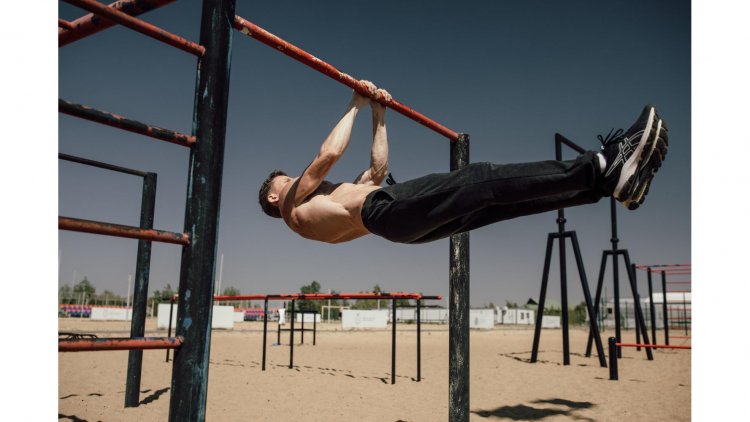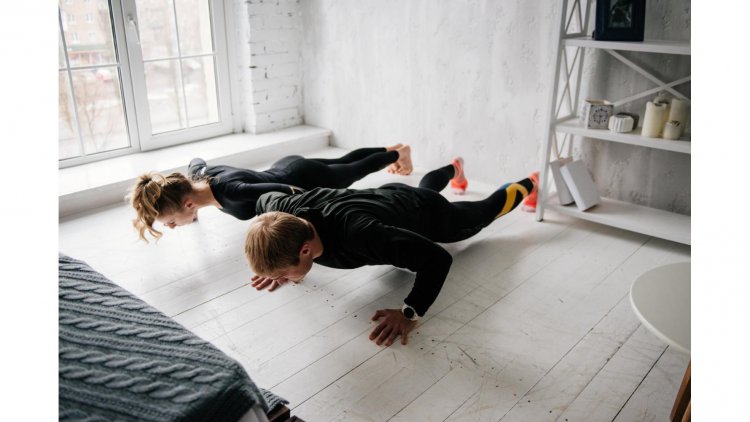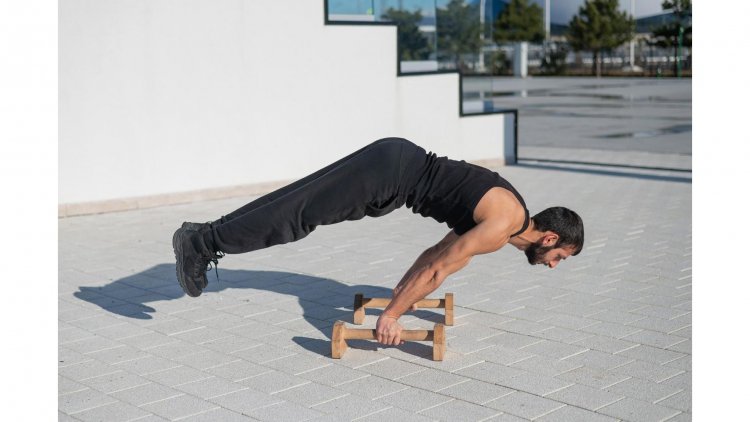The Art and Science of Bodyweight Mastery: Unlocking Strength Through Calisthenics
In the ever-evolving world of fitness, where the latest gym equipment and weightlifting regimens dominate the landscape, calisthenics emerges as a timeless and potent alternative. Calisthenics, the art of building strength and endurance using one’s body weight, has been practiced for centuries across various cultures. Yet, its science and efficacy continue to captivate modern fitness enthusiasts. This article delves into the scientific principles underpinning calisthenics, exploring how this ancient form of exercise can yield remarkable results without the need for traditional weights.


The Biomechanics of Bodyweight Training
Calisthenics relies on understanding the fundamental principles of biomechanics—the study of forces and their effects on the human body. When performing bodyweight exercises, you're essentially using your body as the resistance, which presents a unique set of challenges and benefits.
- Lever Systems and Body Mechanics
One of the core principles of calisthenics is the lever system. The human body functions as a complex system of levers, with bones acting as levers and joints serving as fulcrums. By adjusting the position of your body, you can modify the leverage and increase or decrease the intensity of an exercise.
For example, during a push-up, the hands and feet are the pivot points, while the body acts as a lever. Placing your feet elevated on a bench increases the lever arm, making the exercise more challenging. This principle allows for a versatile range of exercises that can be adjusted to match different fitness levels.
- Muscle Activation and Force Production
In calisthenics, muscle activation is crucial for force production. Exercises such as pull-ups and dips engage multiple muscle groups simultaneously, requiring significant coordination and strength. The absence of external weights means that you must rely on your body's ability to generate sufficient force to complete the movement.
The concept of progressive overload, fundamental to strength training, is also applicable in calisthenics. By increasing the difficulty of exercises—through variations, additional reps, or advanced techniques—you continue to challenge your muscles, promoting growth and adaptation.
Physiological Adaptations to Bodyweight Training
Understanding the physiological changes that occur during calisthenics training can help elucidate why this form of exercise is so effective.
- Muscle Hypertrophy and Strength Gains
Muscle hypertrophy, or the increase in muscle size, results from repetitive stress on muscle fibers. When performing calisthenics, the tension created by bodyweight exercises stimulates muscle growth similarly to traditional weight training. High-intensity exercises, like pistol squats and muscle-ups, induce significant muscle strain, leading to hypertrophy over time.
- Functional Strength and Endurance
One of the key benefits of calisthenics is the development of functional strength. Unlike isolated weightlifting exercises that target specific muscle groups, calisthenics often involves compound movements that engage multiple muscles and joints. This results in improved overall strength and endurance, which translates into better performance in daily activities and other sports.
- Flexibility and Mobility
Calisthenics also promotes flexibility and mobility. Many bodyweight exercises, such as yoga-inspired stretches and dynamic movements, require a full range of motion. This enhances joint flexibility and muscle elasticity, reducing the risk of injury and improving overall movement efficiency.
Neurophysiological Benefits
Calisthenics impacts the nervous system in several beneficial ways.
- Motor Learning and Coordination
Performing bodyweight exercises involves complex motor patterns that require precise coordination between the nervous system and muscles. As you practice these movements, your brain becomes more adept at recruiting the necessary muscle fibers and refining technique. This improved motor learning can enhance your overall athletic performance and daily functional movements.
- Balance and Stability
Many calisthenics exercises, such as handstands and one-legged squats, challenge your balance and stability. These exercises engage core muscles and require fine-tuned control, which improves proprioception (the sense of body position in space) and contributes to better balance. Enhanced balance and stability reduce the risk of falls and injuries, particularly as you age.
The Role of Nutrition in Calisthenics
No discussion on fitness is complete without addressing nutrition. Proper nutrition supports the physiological and neurophysiological benefits of calisthenics.
- Protein Intake and Muscle Recovery
Protein is essential for muscle repair and growth. After a calisthenics workout, your muscles need adequate protein to recover and adapt. High-quality protein sources, such as lean meats, dairy products, and plant-based proteins, should be incorporated into your diet to support muscle hypertrophy and overall recovery.
- Hydration and Performance
Hydration is another crucial aspect of fitness. Adequate fluid intake ensures that your muscles remain hydrated, which is vital for optimal performance and recovery. Dehydration can impair muscle function and reduce exercise effectiveness, so drinking water throughout the day and during workouts is essential.
- Micronutrients and Overall Health
In addition to macronutrients like protein, vitamins and minerals play a significant role in overall health and exercise performance. Nutrients such as magnesium, potassium, and calcium are involved in muscle contraction and energy production. A balanced diet rich in fruits, vegetables, and whole grains will help ensure that you receive these essential micronutrients.
Psychological Aspects of Bodyweight Training
The mental benefits of calisthenics are as important as the physical ones.
- Stress Relief and Mental Well-being
Engaging in regular physical activity, including calisthenics, has been shown to reduce stress and improve mental well-being. Exercise stimulates the release of endorphins, which are natural mood lifters. The sense of accomplishment and the endorphin rush from a challenging workout can boost your mood and help manage stress.
- Goal Setting and Achievement
Calisthenics encourages goal setting and personal achievement. Whether it’s mastering a new exercise, increasing the number of reps, or achieving a new personal best, setting and reaching goals can enhance self-esteem and motivation. This process fosters a positive mindset and encourages perseverance in both fitness and daily life.

Innovative Calisthenics Techniques
The world of calisthenics is rich with innovative techniques that push the boundaries of bodyweight training.
- Advanced Bodyweight Movements
Advanced calisthenics movements, such as planches, levers, and muscle-ups, require a high level of strength, skill, and control. These exercises are not only impressive but also effective in building functional strength and endurance. They challenge multiple muscle groups and can be scaled to match different fitness levels.
- Incorporating Tools and Variations
While calisthenics primarily uses body weight, incorporating tools like resistance bands, gymnastic rings, and parallettes can enhance your workout. These tools add variety and increase the difficulty of exercises, providing additional resistance and promoting muscle growth.
- Mobility and Flexibility Drills
Mobility and flexibility are crucial for overall fitness and injury prevention. Incorporating drills such as dynamic stretching and yoga-inspired movements into your calisthenics routine can improve your range of motion and enhance overall performance.
Harnessing the Power of Recovery and Adaptation
Recovery and adaptation are essential components of any effective fitness regimen, including calisthenics. Understanding how to properly manage these aspects can greatly influence the success of your bodyweight training.
- Rest and Recovery
After a rigorous calisthenics workout, your muscles need time to repair and grow. Adequate rest is crucial for recovery and helps prevent overtraining and injuries. Incorporating rest days into your routine and ensuring you get quality sleep each night will support muscle repair and overall performance.
- Active Recovery
Active recovery involves engaging in low-intensity exercises on rest days to promote blood flow and reduce muscle stiffness. Activities such as light jogging, walking, or gentle stretching can facilitate recovery by keeping the muscles engaged without overexertion.
- Periodization and Training Cycles
Periodization is a strategic approach to training that involves varying the intensity and volume of exercises over time. This method helps prevent plateaus and promotes continued progress. By cycling through different phases of training—such as strength, hypertrophy, and endurance—you can optimize results and reduce the risk of injury.
Adapting Calisthenics for Different Fitness Levels
One of the greatest strengths of calisthenics is its adaptability. Exercises can be modified to suit various fitness levels, making it accessible for beginners and advanced practitioners alike.
- Beginner Strategies
For those new to calisthenics, starting with foundational exercises is key. Basic movements like wall push-ups, knee push-ups, and assisted pull-ups provide a solid base and help build strength gradually. Focusing on proper form and technique will prevent injury and set the stage for more advanced exercises.
- Intermediate Progressions
As you progress, you can incorporate more challenging variations of basic exercises. For instance, transitioning from knee push-ups to standard push-ups, and eventually to decline push-ups, will continue to challenge your muscles and promote growth. Intermediate practitioners might also experiment with exercises like hanging leg raises and regular pull-ups.
- Advanced Techniques
Advanced practitioners can explore high-intensity exercises and skill-based movements. Exercises such as one-arm push-ups, muscle-ups, and front levers require exceptional strength, balance, and technique. Mastery of these movements not only showcases physical prowess but also demonstrates the effectiveness of calisthenics training.
Calisthenics in Different Environments
Another appealing aspect of calisthenics is its versatility. Whether you're at home, in a park, or traveling, you can adapt your workouts to suit your environment.
- Home Workouts
Calisthenics is ideal for home workouts due to its minimal equipment requirements. Simple exercises like bodyweight squats, lunges, and planks can be performed in the comfort of your living space. Adding variations and using household items for resistance can further diversify your routine.
- Outdoor Training
Outdoor spaces offer unique opportunities for calisthenics training. Parks with bars and benches provide ideal settings for exercises like pull-ups, dips, and step-ups. The fresh air and natural surroundings can also enhance the overall workout experience.
- Traveling Fitness
When traveling, maintaining your calisthenics routine is straightforward. Bodyweight exercises require little to no equipment, making them easy to perform in hotel rooms or other temporary accommodations. Additionally, using bodyweight routines can ensure you stay fit even while on the go.
The Social Aspect of Calisthenics
Calisthenics also fosters a sense of community and support among practitioners. Joining a calisthenics group or participating in online forums can provide motivation, encouragement, and valuable tips.
- Group Training and Meetups
Many cities have calisthenics communities that organize group training sessions and meetups. These gatherings offer a chance to connect with like-minded individuals, learn new techniques, and share experiences. The camaraderie and accountability can enhance your training experience and keep you motivated.
- Online Communities
The internet has made it easier to find and engage with calisthenics enthusiasts worldwide. Online forums, social media groups, and fitness apps offer platforms for sharing progress, seeking advice, and participating in virtual challenges. These digital communities can provide support and inspiration as you advance in your calisthenics journey.
Embracing the Holistic Benefits of Calisthenics
Calisthenics is more than just a workout—it's a holistic approach to fitness that integrates physical, mental, and emotional well-being.
- Building Confidence
Mastering bodyweight exercises and achieving personal goals can significantly boost self-confidence. The sense of accomplishment from conquering challenging movements or surpassing previous milestones fosters a positive self-image and enhances overall self-esteem.
- Cultivating Discipline
Regular calisthenics training requires consistency and discipline. Adhering to a workout routine and pushing through challenging exercises cultivates resilience and determination. These traits often extend beyond fitness, positively impacting other areas of life.
- Promoting Longevity
Engaging in calisthenics contributes to long-term health and longevity. The combination of strength, flexibility, and functional fitness promotes overall well-being and reduces the risk of age-related decline. Regular physical activity, combined with a balanced diet and healthy lifestyle, supports a vibrant and active life well into old age.
In Summary
Calisthenics represents a powerful and versatile form of exercise that builds strength, endurance, and flexibility without the need for traditional weights. Through the principles of biomechanics, physiological adaptation, and innovative techniques, calisthenics offers an effective and accessible approach to fitness. Its adaptability to various fitness levels, environments, and lifestyles makes it an ideal choice for individuals seeking a holistic and empowering workout experience.
By embracing the science and benefits of calisthenics, you can unlock your body's potential and achieve remarkable results. Whether you're just starting your fitness journey or looking to refine your training, calisthenics provides a dynamic and fulfilling path to improved health and well-being.
Disclaimer: The information provided in this article is for educational purposes only and should not be considered medical advice. If you have any health concerns or are experiencing symptoms, it is important to consult with a healthcare professional, such as a doctor or clinic, for proper diagnosis and treatment. Always seek the advice of your doctor or other qualified health provider with any questions you may have regarding a medical condition. Do not disregard professional medical advice or delay in seeking it because of something you have read in this article.
What's Your Reaction?





















